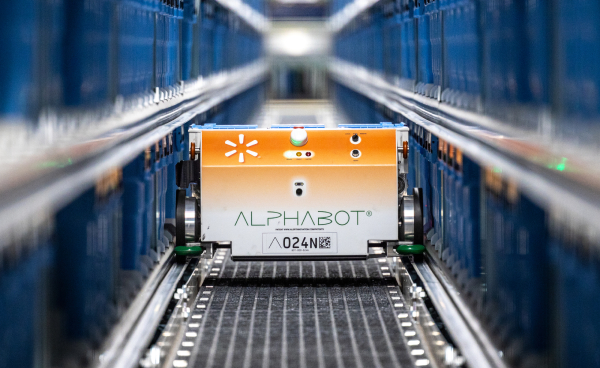Alphabot®
Alphabot technology powers Walmart’s Market Fulfillment Centers. This technology is an advanced robotic warehouse automation system customized for online pick-up and delivery customers. The unique system streamlines the process of fulfilling online grocery orders for faster customer service.
The Alphabot system is designed to be flexible, scalable, and efficient, using a combination of mobile robots, modular storage totes, and proprietary software to automate the warehouse operations. The robots uniquely travel in three dimensions within the storage structure, retrieving items and delivering them to a picking station where associates can efficiently prepare the customer orders.

By automating the retrieval process, MFCs can significantly reduce the time and effort required for order fulfillment, improving the overall efficiency of the supply chain and increasing customer satisfaction by ensuring that orders are fulfilled accurately and quickly.
System Features
Fast Order Completion
A 40-item order can be picked within 5.5 minutes.
High Reliability
No single points of failure; every bot can access every location via multiple paths.
Scalability
Because throughput assets are not captive within storage assets, throughput and storage capacities can be scaled independently.
Cost Efficiency
Mobile bots eliminate the need for – and cost of – conveyors, lifts, cranes, and other automation hardware.
Built-in Order Staging and Consolidation
All completed orders are held in the system, in the proper temperature zone, until time to dispense.
Battery-free Operation
Supercapacitors enable 100% duty-cycle from each bot – no chemical batteries.
The Alphabot Platform
Our Alphabot technology is built around a mobile robot unique in its ability to operate in all three dimensions within a multilevel storage structure. Because our robots are the only moving parts – there are no lifts, conveyors, or any other material-handling mechanisms – an Alphabot solution is uniquely capital-efficient, scalable, and adaptable.